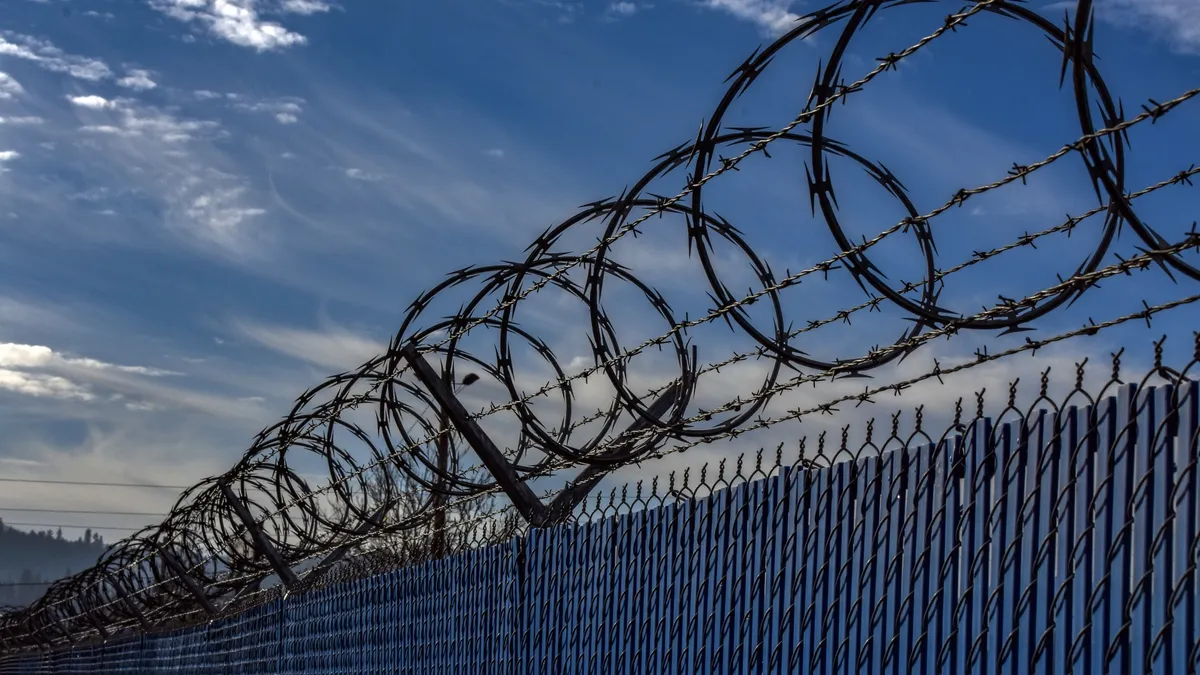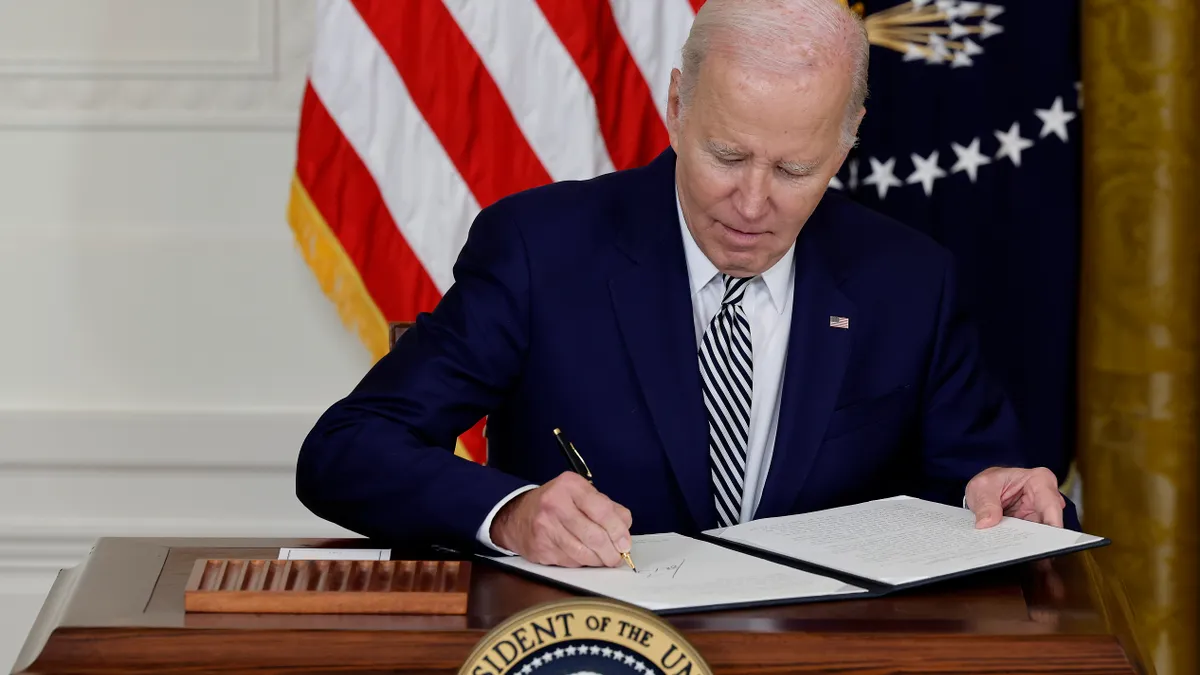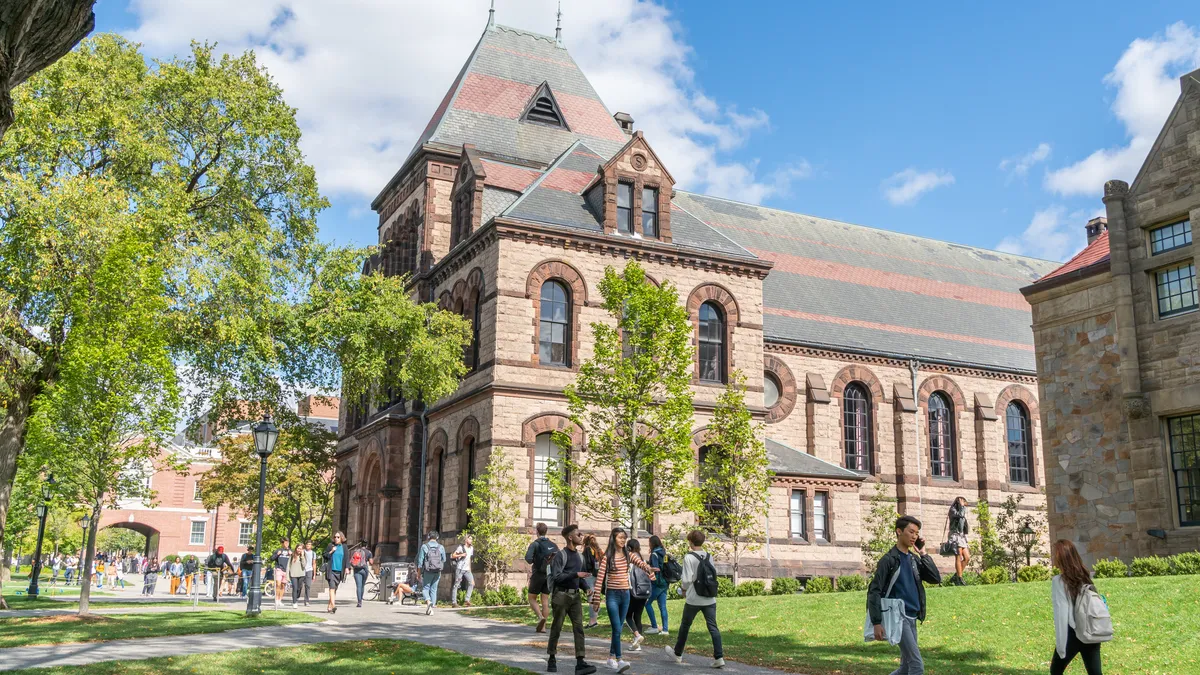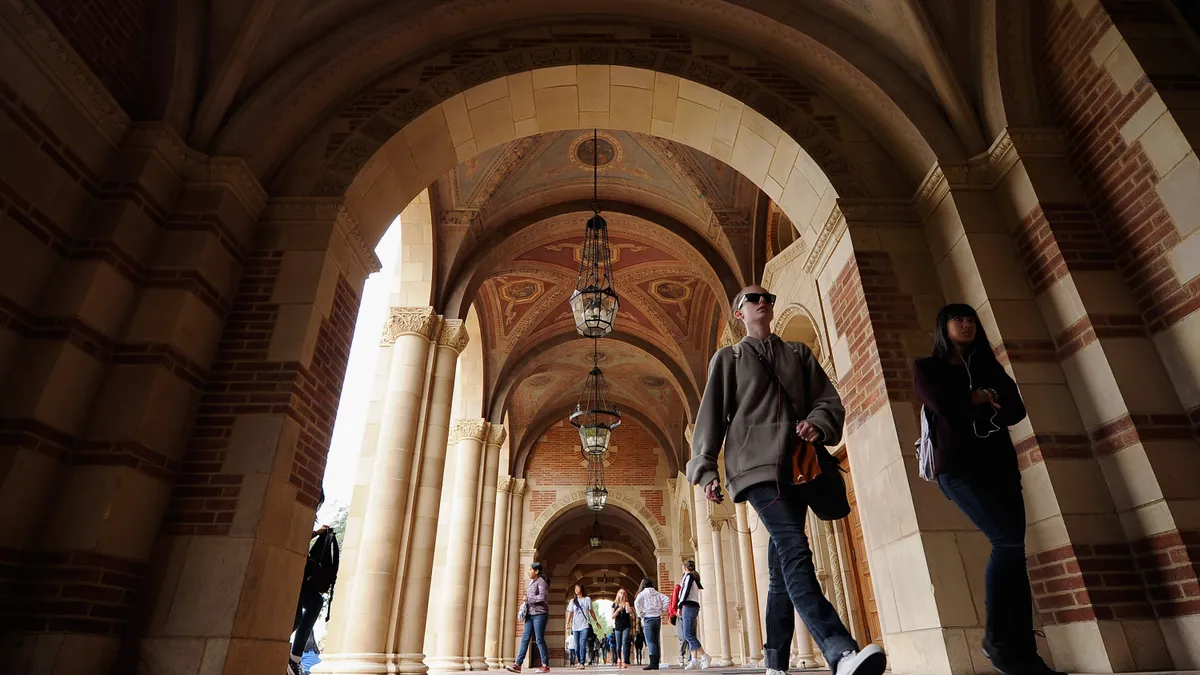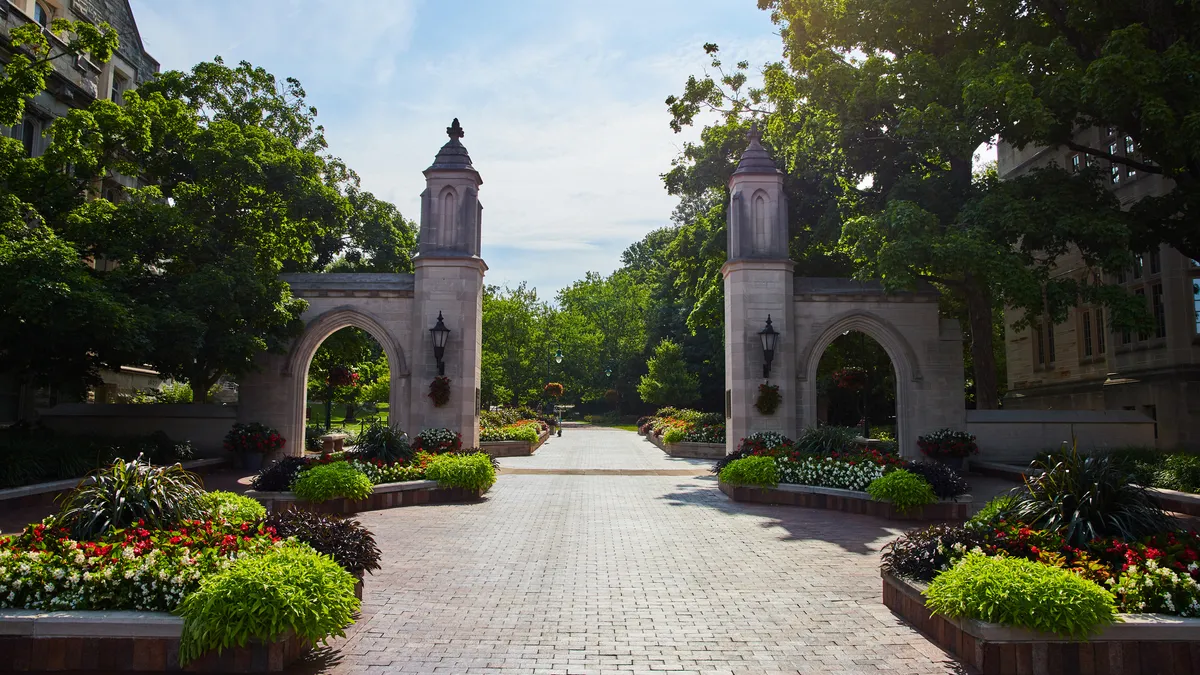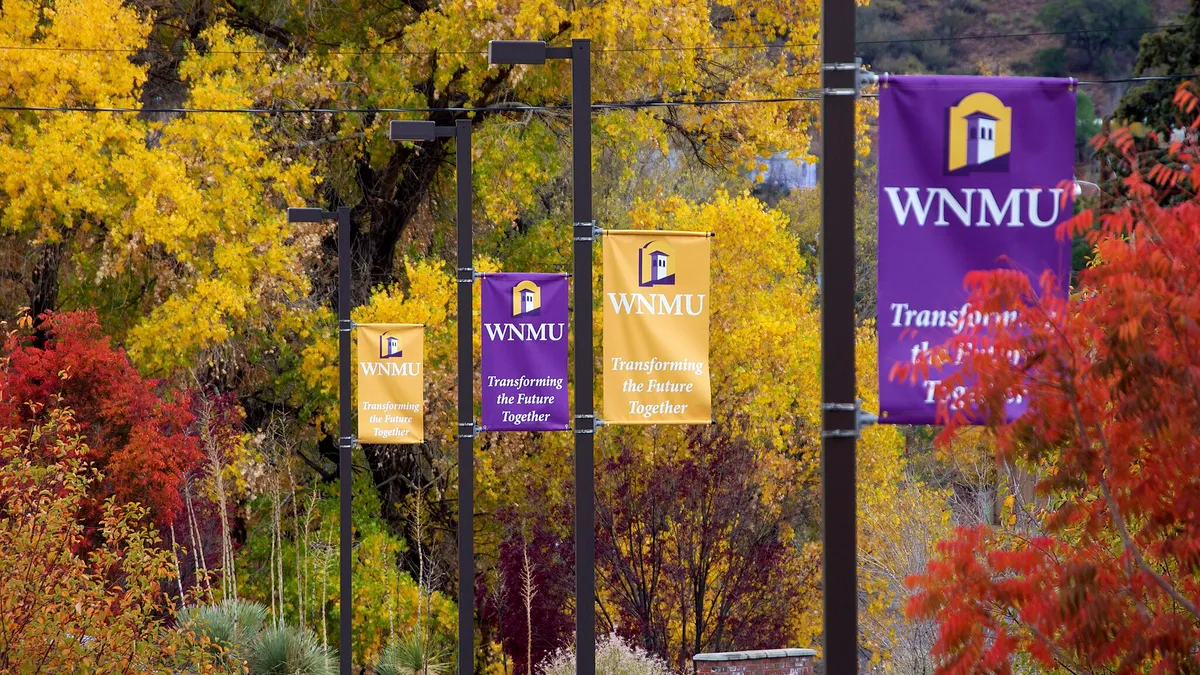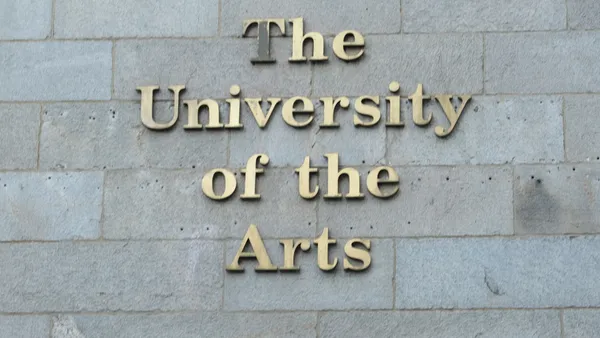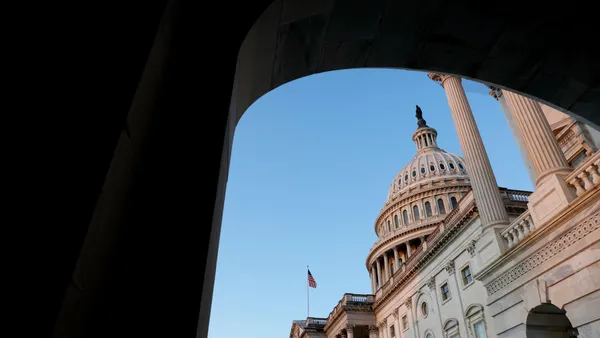Momentum is building behind efforts to give prisoners better access to a college education and the federal student aid to pay for it.
In May, the U.S. Department of Education expanded its Second Chance Pell program, an experimental sites initiative that gives up to 12,000 incarcerated students access to federal grants. The move opens up the program to new institutional participants, which would join the current roster of about 64 colleges across 26 states.
Advocates hope to move beyond pilot programs, however, and permanently lift a 25-year-old ban on access to federal aid for all students who are incarcerated. Lawmakers from both major parties have indicated interest in doing so.
That policy change would make around 463,000 incarcerated people in state prisons eligible for Pell Grants, data from the Vera Institute for Justice shows. That's still less than 25% of people who are incarcerated in the U.S. As it is, the program's current scope means just 10,000 incarcerated students accessed the funds in the last 12 months, according to data from the Ed Department.
Still, there are reasons for optimism. Prisoners who participate in educational programming while incarcerated are 43% less likely to return to prison, according to a 2013 report from the Rand Corp. And taking those classes made them 13% more likely than those who didn't participate to get jobs upon release. Already, about two-thirds of incarcerated adults have graduated from high school, according to Vera.
But conversations at a Vera Institute event last week in Washington among officials at colleges offering the programs and the corrections officers overseeing them drew attention to the array of challenges facing efforts to expand the system formally.
Technical challenges
Several presenters cautioned about the difficulties of setting up programs in prisons without internet access. That includes shepherding students through onerous FAFSA applications to get a Pell Grant and then the challenge of getting course materials approved by the corrections departments. Technological limitations can make it harder for instructors to teach.
"The lack of internet access makes everything more challenging," said Michael Budke, the corrections education program coordinator at Chemeketa Community College in Salem, Oregon, in an email after the event. Budke attended the conference. His college offers education programs at three Oregon prisons.
It can take weeks for a student to fill out their FAFSA form and have it entered by hand at the Ed Department only to learn that an old unpaid loan will block new aid, he said.
Resolving an unpaid loan can be challenging for prisoners, who are in many ways living off the grid. Students who have defaulted on a previous student loan are ineligible for Pell Grants unless they can repay the loan in full, which is often not an option while incarcerated, or make payments for nine payments over a 10-month period, which can be just $5 a month.
Even if a prisoner pays on a loan every month at the same time, there's a chance a payment might reach the processor late or, if it arrives early, be applied to the wrong month, Budke said.
According to the Vera report, financial need is one of the reasons just 9% of incarcerated adults earn a certificate or associate degree.
No 'foundation'
Other issues endemic in the prison system can push education down on facilities' priority lists.
Michael Fletcher, an assistant director with Arkansas Community Correction, detailed how inmates at his maximum-security prison need to travel three and a half hours by bus to get dental care.
"We don't have the fundamental foundation to do this,” he said at the event. "I'm worried about [sending] guys going home with a driver's license and no mental health issues."
Mary Gould, director for the Alliance for Higher Education in Prison, told Fletcher he was "in the majority" with those concerns.
Their concerns echoed findings in a recent U.S. Government Accountability Office report that surveyed 12 colleges participating in the first round of the Ed Department's Second Chance Pell pilot, which started in 2015.
The report found that schools struggled to determine whether incarcerated students were Pell-eligible because some had defaulted on past loans or had not registered for the Selective Service, which is generally a requirement. Getting the necessary documents to verify federal aid applications was also a challenge.
More broadly, schools said they needed to "develop new processes and creative solutions" to work around technology and space limitations as well as the disruption caused when a student is transferred to another prison. Eight of the 12 said they had to hire more staff or "developed new approaches" for the pilot.
College advantage
Still, Budke and others said, the opportunity to attend college while incarcerated is changing prisoners' lives for the better.
"We used to be all about GEDs," said Loretta Taylor, the education services administrator of the Washington Department of Corrections, at the event. "But we’ve shifted. We now know that's not enough."
Research has pointed to growing opportunities for jobs in fields requiring more than a high school diploma but less than a four-year degree. These account for around one-quarter of jobs earning at least $35,000 for younger workers and $45,000 for workers between age 45 and 64, according to research from Georgetown University's Center on Education and the Workforce.
A 2018 study found that 85% of incarcerated students in California who took "degree-applicable" courses between the spring of 2016 and the spring of 2018 passed their classes, bettering the 75% of on-campus students who did the same.
This could become a more pressing issue in light of criminal justice reforms that will result in tens of thousands of prisoners' sentences ending earlier than expected.
"We all benefit when someone leaves incarceration becoming a productive citizen," said John Wetzel, secretary of corrections for Pennsylvania's Department of Corrections, at the event.


